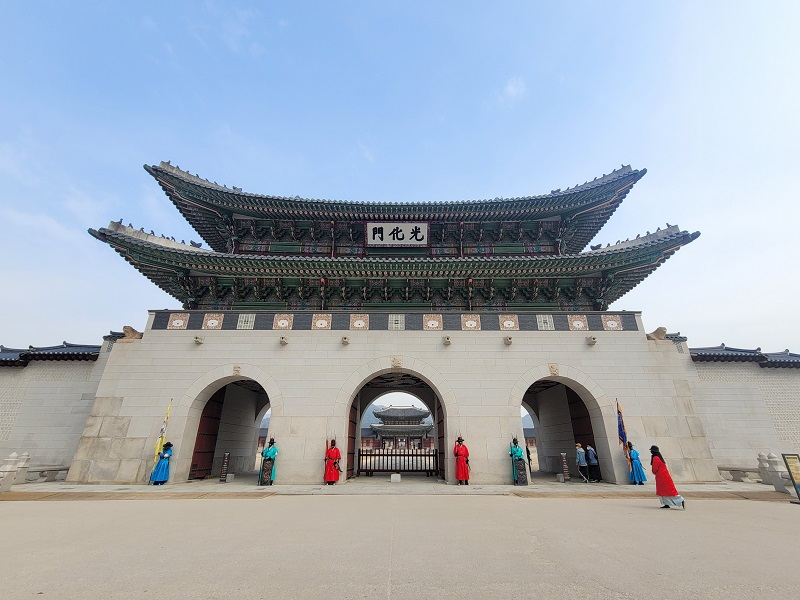
Week 4 – Gyeongbukgang Palace
We went to the Gyeongbukgang Palace which is one of the 5 palaces in the Seoul Metropolitan area. This was the scene of many historical, political, and economic development in Korea’s history. It was also the scene of the assassination of Empress Myeongseong during the Jonsen period.
The palace was built in 1395. Gyeongbokgung Palace is commonly referred to as the Northern Palace because its location is the furthest north when compared to the surrounding palaces such as Changdeokgung and Gyeonghuigung, respectively known as the Eastern and Western Palaces. However, Gyeongbokgung Palace certainly stands out amongst the five palaces as the most beautiful and the largest. The Five Grand Palaces are Gyeongbukgang, Gyeonghuigung, Deoksugung, Changgyeonggung, and Changdeokgung.
The palace was the first, largest, and most important of the royal palace that were built in the Joseon dynasty. It has been continuously rebuilt and restored due to numerous fires in the past several centuries. It stands as strong representation of the Joseon dynasty as many of the structures stayed intact in that period. You can witness the beauty and tranquility of the palace and gardens as you walk through the compound.
The modern-day Korean government has worked to fully restore and maintain these beautiful palaces, so you can bear witness to the bring and beautiful colors of the wooden structures and buildings. Buildings and structures that were destroyed by fire or invasion were also rebuilt! There are two museums in the grounds called the National Palace Museum of Korea and the National Folk Museum of Korea.
I went to the Gyeongbukgang Palace and took a guided tour where they have one each day at certain times. The ticket was affordable, standing at 6,000 won per foreign adult. Guided tours were free. My guide was extremely engaging and she taught us a lot about the history and meaning behind these gardens and buildings.
There was a main residence for the King and it was special because it lacked a special arch on the roof of the building. This arch was present in all the other buildings in the palace. The reason was that the special arch had a similar pronunciation as the word “dragon” in Korean, so they designed the King’s residence without the special arch. The King was regarded to have the spirit of a dragon and two dragons cannot reside in the same place or there would be clashes and catastrophic problems. Thus, only the King’s residence lacked the “dragon” arch because there was already a dragon in the building (aka the King, himself).
There were many other interesting tidbits of detail and information during the tour so it was very interesting to hear about the small details that went into the design of the palace. Another interesting detail was the main hall where the King would perform his kingly duties and politics. There was a unique design choice on the ceiling above the King’s throne—there were two dragons dancing and they both had 7 toes. The guide mentioned that the dragons typically had 6 toes and the meaning behind the 7 toes were unknown. All in all, there is a lot to be seen in Gyeongbukgang Palace and I would highly recommend it for those who want to learn about Korean history or to see the changing of the guards!
